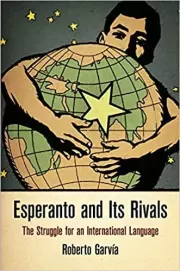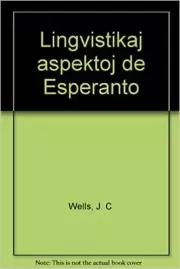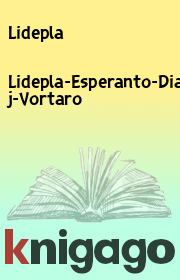Roberto ía - Esperanto and Its Rivals: The Struggle for an International Language
 | Название: | Esperanto and Its Rivals: The Struggle for an International Language |
Автор: | Roberto ía | |
Жанр: | Старинная литература | |
Изадано в серии: | неизвестно | |
Издательство: | неизвестно | |
Год издания: | 2015 | |
ISBN: | неизвестно | |
Отзывы: | Комментировать | |
Рейтинг: | ||
Поделись книгой с друзьями! Помощь сайту: донат на оплату сервера | ||
Краткое содержание книги "Esperanto and Its Rivals: The Struggle for an International Language"
The problems of international communication and linguistic rights are recurring debates in the present-day age of globalization. But the debate truly began over a hundred years ago, when the increasingly interconnected world of the nineteenth century fostered a desire for the development of a global lingua franca. Many individuals and social movements competed to create an artificial language unencumbered by the political rivalries that accompanied English, German, and French. Organizations including the American Philosophical Society, the International Association of Academies, the International Peace Bureau, the Comintern, and the League of Nations intervened in the debate about the possibility of an artificial language, but of the numerous tongues created before World War II, only Esperanto survives today.
Esperanto and Its Rivals sheds light on the factors that led almost all artificial languages to fail and helped English to prevail as the global tongue of the twenty-first century. Exploring the social and political contexts of the three most prominent artificial languages—Volapük, Esperanto, and Ido—Roberto Garvía examines the roles played by social movement leaders and inventors, the strategies different organizations used to lobby for each language, and other early decisions that shaped how those languages spread and evolved. Through the rise and fall of these artificial languages, Esperanto and Its Rivals reveals the intellectual dilemmas and political anxieties that troubled the globalizing world at the turn of the twentieth century.
Читаем онлайн "Esperanto and Its Rivals: The Struggle for an International Language". [Страница - 3]
- 1
- 2
- 3
- 4
- 5
- . . .
- последняя (72) »
Second, in addition to being single-purpose instruments, typewriters and video recorders are end products. They do not change after use. Artificial lan- guage speakers, on the contrary, do not "buy" an end product. Using the lan- guage they have chosen to learn, they can try to change it regardless of the opinions or priorities of the language's inventor or other speakers. All lan- guages are conventional, but the conventional nature of languages is most visible in the case of artificial ones. Some may be happy to say "et" to mean "and," others might prefer the Greek "kai," and the same goes for grammar or any other component of the language. Not being an end product, an arti- ficial language can mutate in a thousand directions. Whereas changes in the design of end products are in the hands of the producers, changes in an ar- tificial language are in the hands of the users, who, for the survival of their language should be willing to reach a collective agreement as to its basic characteristics.
Third, whereas it is difficult to imagine VHS or Betamax adopters in the pre-blog and social media age launching periodicals and setting up local or- ganizations or sites dedicated to promoting and extolling their chosen prod- uct, this is indeed what happened among international language supporters. Artificial language users committed their time and effort in varying de- grees to their language's success. In the case of artificial languages, unlike other standardization battles, we find collective action rather than individual adoptions.
These three qualifications suggest that in the case of languages, path dependence intersects with social movements. Social movement literature and scholarship is important for understanding the fate of artificial languages because, ultimately, it is not purely technologies or formal qualities that com- pete, but the social movements that embrace those languages.
A common ground between path dependence and social movements lit- erature are the topics of leadership and strategy.10 Artificial language users may agree or disagree on this or that word or grammatical rule, and they also might have different understandings about the nature of the language, as a pure instrument of communication or as a tool that might serve other pur- poses or identities. How they resolve these potential disagreements depends a great deal on leadership and the decision-making process, which may or may not facilitate agreement, evolution, and growth.
An important characteristic of the language movements covered in this book is the crucial role of their inventors. Whereas in other social movements it is possible to separate leadership and issues, grievances and demands, in the Volapuk, Esperanto, and Ido movements the language and the organiza- tional template imprinted by their leaders were two sides of the same coin. In this sense, artificial language movements resemble social movements of a messianic character, where the message converges with the strategy to pop- ularize the chosen language. It is for this reason, and also because research on path-dependent processes focus on the early stage of the process, that I concentrate on the organizational templates and strategies that leaders im- printed on their movements.
Leaders mobilize and inspire followers, set up an agenda for action, frame a discourse that helps them identify the challenges and legitimize their ac- tions vis-a-vis the external world, collect resources, outline an organizational strategy, and decide on decision-making processes. To understand the organ- izational and decision-making repertoires that artificial language inventors imprinted on their language movements, I explore the social and political con- texts that shaped their thinking.11 As we will see, their conceptions of how language works and the organizational strategies they advanced largely de- termined their followers' responses, and, ultimately, the fate of their languages. But before turning to Johann Martin Schleyer, the first mover and the inven- tor of Volapuk, it is important to understand how Europeans ceased to think of languages as artifacts, or as mere instruments of communication, in order to transform them into markers of identity.
CHAPTER1
The Emergence of Linguistic Conscience
Social scientists use the term "critical junctures" to describe those historical periods when the power of standing institutions weakens and societies are forced to choose among new institutional trajectories.1 In the recent history of the European linguistic regime it is possible to identify two such critical junctures. The first took place in the late seventeenth century, when Latin was abandoned as the lingua franca and replaced by a competing, unstable array of vernacular languages. The second was in the late nineteenth century, when English, French, and German competed to become the first global language. Meanwhile, the rediscovery and reinvention of an array of new languages stirred by the nationalist elan of the time produced a new Babelization of Eu rope.2
Interest in and research on artificial languages was particularly intense at these two critical junctures, when the need for an international lingua franca was so evident. This interest did not emerge in an intellectual vacuum. It co- evolved with ideas about how languages work, how they relate to the people who speak them, and how states should think about or handle their popula- tions' linguistic repertoires.
* * *
The decline of Latin in the first critical juncture is easy enough to track. In 1687, Newton published his Principia Mathematica in Latin. Some years later he sent his Opticks to press in English. He followed the example of Gal- ileo, who decided to publish his Dialogue Concerning the Two Chief World Systems in Italian, when he had previously written his Siderius nuncius (The sidereal messenger) in Latin. Descartes wrote his Rules for the Direction of the Mind in Latin, only to later publish his Discourse on the Method in French.
Beyond philosophical and scientific circles, Latin eroded in other spheres of life. Inspired by the emergence of the modern state, a new literary genre emerged, devoted to the questioning of Latin, particularly in Protestant coun- tries, and the exaltation of the national languages.
This literary genre initiated a new epoch of linguistic conscience. Lan- guage had scarcely been a political issue in antiquity and the Middle Ages.3 France, striving to become a world power, most colorfully illustrates this lin- guistic conscience. In 1549, Joachim Du Bellay published his La defense et illustration de la langue frangaise, in which he claimed that the language of the French royal court could more than satisfactorily compare not only with Greek and Latin, but also with Tuscan. Rabelais, Montaigne, and others also paid homage to the mother language, but those with closer court contacts, or looking for social recognition, did so most energetically. This was true with Fran^ois Malherbe, or Le Labourer, who, in his Avantages de la langue fran- gaise (1667),
--">- 1
- 2
- 3
- 4
- 5
- . . .
- последняя (72) »
Книги схожие с «Esperanto and Its Rivals: The Struggle for an International Language» по жанру, серии, автору или названию:
 |
| Fians, Guilherme - Esperanto Revolutionaries and Geeks: Language Politics, Digital Media and the Making of an... Жанр: Старинная литература Год издания: 2021 |
 |
| Wendy Heller - Lidia Life of Lidia Zamenhof, Daughter of Esperanto by Wendy Heller (z-lib.org) Жанр: Старинная литература Год издания: 1985 |
 |
| J. C. Wells - Lingvistikaj aspektoj de Esperanto Жанр: Старинная литература Год издания: 1989 |



